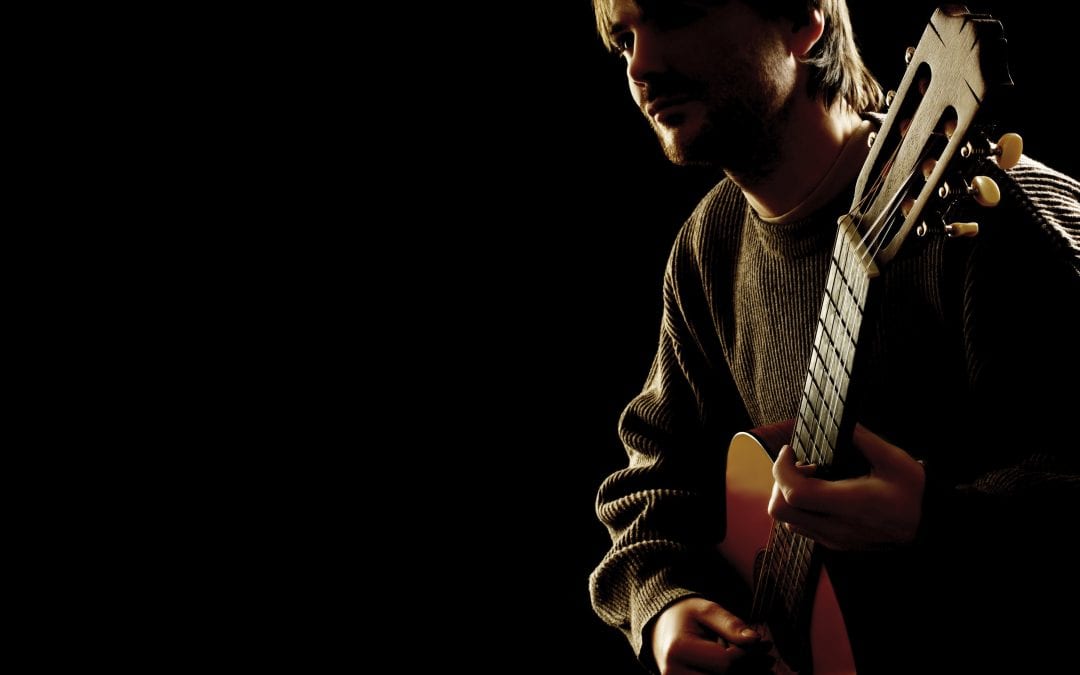This week’s blog draws on some helpful messages from our Community Drop-in which has been running over summer as part of our training and education programme. In the early sessions, some participants mentioned that they were struggling to find the motivation to practice following the cancellation of live performances. Responding to this, Dr Pippa Wheble, our Community Drop-in facilitator, programmed a session on mental practice as a means of thinking about and developing practice skills during the COVID-19 outbreak. Dr Ellis Pecen, an applied performance psychologist, gave an inspiring session to introduce these skills and has kindly allowed us to share some of her key exercises and messages from the session in this blog. We are grateful to Dr Pippa Wheble for her work in bringing this together.
Ellis specialises in using applied performance psychology techniques which include, for instance, imagery, focus training and mental practice skills. Such skills can be used to enhance performance as well as contribute to performer wellbeing. Psychological skills can also help in learning to practice in an efficient way and to develop mental practice to support you pre-performance.
Focus & Authenticity in Communication
Focusing Under Pressure
An exercise in exploring an ‘image’ of your vision
- Write down a few characteristics of your ideal self: Who do you want to be?
- Examples: Graceful, joyful, engaging, strong, empowering,…
- Write down a few adjectives describing: What does it mean to you to be successful in a broad sense?
- Examples: Being Myself, being welcoming, having integrity, being a good role model
- What do you care about meaning to the world/ to others?
- Examples: Truthful, loving, inspiring young performers, moving someone
- Look back at your answers and try and come up with a mental ‘picture’ that brings those characteristics together. A bit like a photograph that has all the elements that you care about in a single mental ‘snapshot’. It doesn’t have to be literal; you can image elements that represent the feeling of what you have described above. The final image should instantly remind you of what you care about and (re)focus you on vision and intention.
You can use this vision image to shift perspective and shift your focus when you are feeling overwhelmed or under pressure and want to keep yourself from overanalysing unnecessarily. For example, right before you walk on stage – go to that place and remember what this means to you. You can practice this every day – before you answer the phone or send that email, before you walk into a meeting or start your practice. Notice how this changes your experience of stress throughout the day and in pressure situations.
Flexible Focus & Imagery Skills
Narrowing and broadening our focus are both important and have their strengths in different contexts. Internal and narrow focus might be useful, for instance, when you are learning a new task and need to analyse something, or you need to remind yourself of a specific technical cue or instruction or you need to regulate your own body.
Focus and imagery skill are often used as part of mental preparation, practice and pre-performance routines. “Functional equivalence” is a word you might hear a lot in this area. It refers to the idea that preparing and mentally running through every part of an action can result in motor responses that are ‘equivalent’ to what would happen in the body if you were to actually execute that movement. For example, many elite performers use mental practice to master all aspects of their performance, without even moving their bodies and it can be especially useful during times of overtraining or injury when physical practice is not possible to the same degree.
Transitioning from practice to performance becomes a smaller shift when our mental practice has already prepared us for most of the facets of the performance. It begins to feel familiar, as though we have already done the performance before and it gives us something beneficial to focus on.
Mental practice can be exhausting and intense! Ellis recommends starting slowly and regularly and not doing it for too long. When mental rehearsal is done well, it can feel cognitively draining. If it does not, you might be fantasising or visualising recreationally. Try, for instance, 15 min uninterrupted, 3 times a week to start off with and build up gradually. It takes a lot of practice to become aware of all of the things that you do as you compete/speak/play/act/dance or sing, but this type of practice can have a huge impact on your performance.
Introducing the PETTLEP model for imagery and performance preparation:
Adapting PETTLEP for a pre-performance scenario
• PHYSICALITY: How does my body feel? Notice the symptoms like heart rate, breathing, trembling hands, dry throat, etc. What will you be thinking about before you are about to start?
• EMOTION: What emotions do I feel? What am I thinking and experiencing?
• TASK: What are the task relevant elements to think about? What are the cues I need to remind myself of and where should I allow myself not to get too invested in the task and avoid overanalysing?
• TIMING: What will I do to set myself into the right ‘timing’ or cadence of speech or movement? What does this timing sound like and what do I notice myself doing mentally in terms of timing? Am I speeding it up in my head under pressure? Should I adjust the timing I have in mind? Think about how you will pace the setting of a rhythm (e.g., the 1-2-3-GO! as mentioned above) and how it will feel to do this when you are under pre-performance pressure. Notice also how the excitement is affecting the mental representation of timing.
• ENVIRONMENT: Image the stage, the floor, the smell, the lights, the fabric of your clothing and your shoes in the moments before you walk onto the stage.
• PERSPECTIVE: Really see yourself before the performance and as you are about to walk on. You can also try a 3rd person perspective if you feel ready. Now right before you go on, try switching your focus to your ‘vision image’ we described above. How does it feel to switch? What do notice? What is your mind doing? Why are you really here? What really matters to you? What is your intention? What is the greater meaning and purpose of what you are about to do? Keep your eyes on this vision and notice how this affects you.
Q & A with Ellis
Q: I often don’t get the chance to think pre-performance because I work in a business setting where we go from one thing to the next. How do you create that space?
I would also like to mention that if we use the elite performance model of peaks and troughs, it is assuming short episodes of peak arousal (pressure/stress/competition) followed by a return to a baseline of training and recovery in-between these peaks, often supported by coaches and a team of nutritionists, psychologists, sports massage and what have you. This is simply not available to everyone in every context. When people try to replicate this acute peaking in a context where people do not have the support and are asked to peak non-stop, the result is often chronic stress (living in a constant state of arousal) and/or a kind of performance ‘flat line’ from which it is difficult to achieve true peak performance. It is crucial to invest in strategies that promote recovery, rest and reflection where possible. But also, remember this: your attitude to stress makes a lot of difference. If you fear the fear, the cycle becomes more vicious. Think of it this way: stress if fuel that simply wants an outlet, without which we would probably procrastinate. And if you are under stress – you also get more opportunities every day to practice applying your strategies. You need to be in that moment of aversion and discomfort to really practice how to apply and work with a strategy. Otherwise it’s just someone practising in the comfort of their home and not having good transfer to the pressure situation. Consider fear as an opportunity to practice.
Q: Can you change your focus, vision or image?
Q: What should you do if things don’t go how you envisioned?
And with regards to what we spoke about when we discussed, imagery, focus and vision, we also need to accept that solutions may feel counter-intuitive in the moment. For instance, if you are under pressure pre-performance, feeling irritable and afraid and your attention is drawn to your symptoms and thoughts you might not want to have… it can be hard to trust that doing the counter-intuitive thing of, for instance, shifting focus might help. It is also useful to learn to learn to trust our preparation (even if it isn’t where you want it to be at the moment) and I have found from experience that performers do quite well when they focus on something they truly believe in and care about. Sometimes we don’t want to believe in ourselves, but we can be absolutely sure about what we care about or visions we have. If you can’t trust yourself, trust something else to get you there. A focus on vision or a higher principle can be very empowering.
As with all skills, it does take practice, so think about
• Experimenting with different types of focus. Notice that when you prepare and analyse a specific aspect in preparation, that you are applying a more narrow focus, if you focus on how you feel or specific things you experience in your body, you are applying an internal focus. Now in addition to this, practice applying the opposites too. Think of ways you could apply a broad focus. And an external focus. Experiment until you can switch between them reliably and notice when you benefit from each the most.
• Applying a narrow and/or internal focus regularly during practice and in preparing for a performance can be useful to help focus on technique, specific cues you need to think of or specific things that you need to limit your attention to.
• A broad and/or external focus can be focused outside of yourself, and in subjective and communicative disciplines, experiment with what that means to you and how you can pull focus away from yourself and technical concerns. Think about meaning, purpose, images, the effects of your movements and projected ‘outward’,…
• Try practising imagery training regularly and allow yourself to feel anxious
• Try reminding yourself of the vision image you constructed above as a quick and powerful refocusing tool.
About Ellis Pecen
Ellis’ focus is on enhancing performance and/or wellbeing and to make clear the distinction between the two and tailor strategies accordingly. She works on enabling skill acquisition through psychological skills training as well as by focusing on building vision unique to the individual.
Ellis retired from professional performance in 2017 and has worked with organisations and individuals in entertainment, sports, dance, finance, business, music, comedy, theatre and education. She has worked with people of all ages and has extensive experience working with children and teenagers as well.
Ellis combines applied research and experience to make performance psychology practical and accessible. Popular training topics have included: dealing with performance anxiety, psychological skills training, productivity, decision-making, communication, professional skills, lifestyle management, memorisation, study skills and wellbeing in high performance environments.
How to get in touch with Ellis:
References
Jeannerod, M, (1997), The cognitive neuroscience of action, Oxford, UK: Blackwell
Folvig, E. (2011). Imaging mastery: Applying the PETTLEP model of imagery to music performance practice (Master’s thesis). Faculty of the VCA & Music, The University of Melbourne.
Nideffer, R. M. (1976a). The Inner Athlete. New York: Thomas Crowell.
Wright, D. J., Wakefield, C. J., & Smith, D. (2014). Using PETTLEP imagery to improve music performance: A review. Musicae Scientiae, 18, 448– 463. http://dx.doi.org/10.1177/1029864914537668
For more information on BAPAM training https://www.bapam.org.uk/events/



